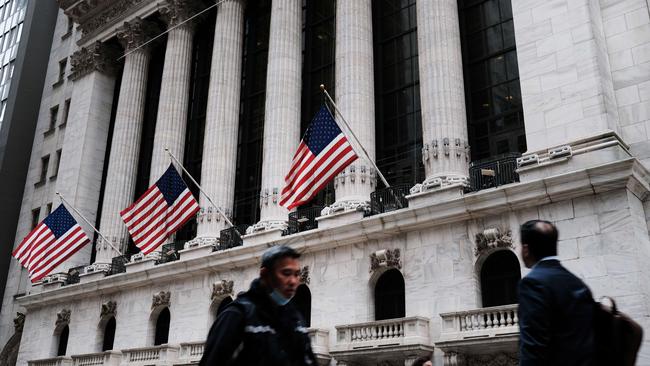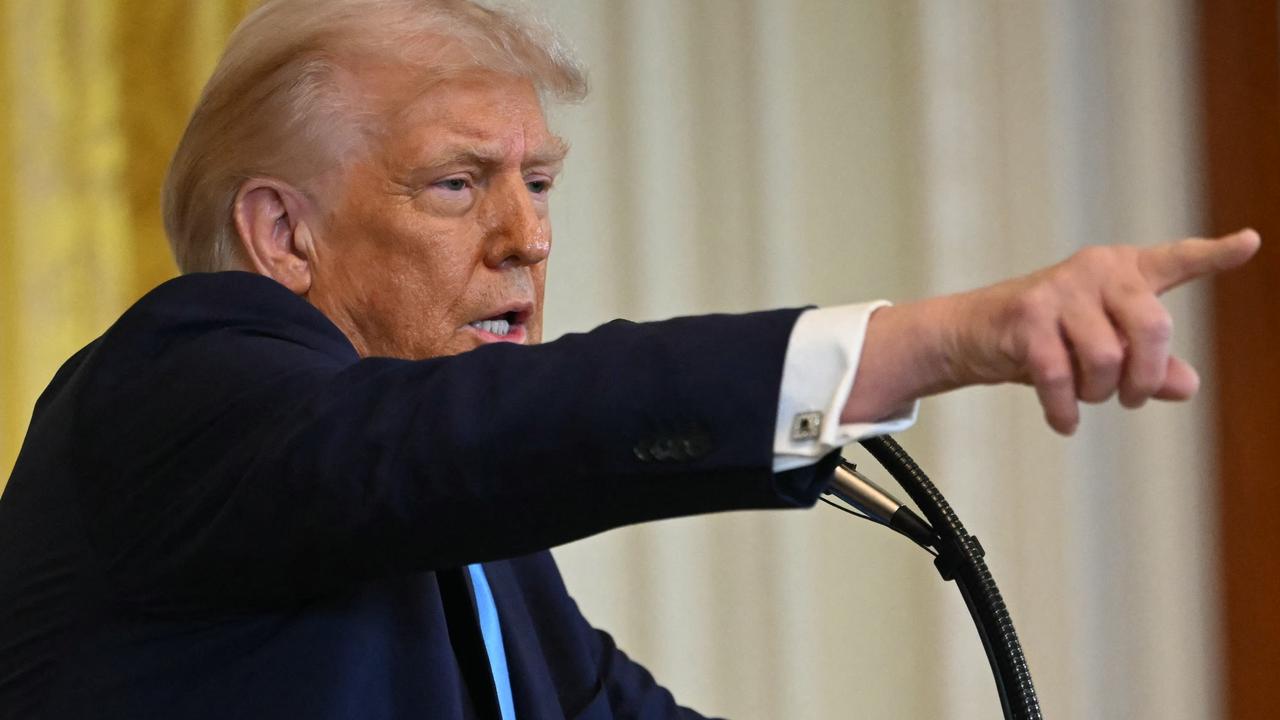US economy shrinks 1.4pc in first quarter amid recession risk
The world’s largest economy shrank 1.4 per cent in the first quarter, raising the prospect of a double-dip recession for the Biden administration but interest rates are still expected to climb.

The US economy shrank in the first quarter of 2022, raising the prospect of a double-dip recession for the Biden administration, even if the weaker than expected result convinces the Federal Reserve to lift interest rates more slowly when its policy making board meets next week.
President Joe Biden dismissed the prospect of another recession, putting the 1.4 per cent decline (on an annualised basis, as per US custom) in the first three months of the year down to “technical factors” that obscured the economy’s “position of strength”.
“I’m not concerned about a recession … what you’re seeing is enormous growth in the country that was affected by everything from Covid and the Covid blockages that we — occurred along the way,” he said at a press conference.
Stock prices in New York soared on the release of the first national accounts for 2022: the blue-chip S&P500 index rose almost 3 per cent after days of heavy losses, as investors trimmed the probability the Federal Reserve would follow through with what had been a near certain 0.5 percentage point increase in the Federal Funds rate next week.
“It probably won’t stop the Fed from hiking interest rates since officials will chalk it up to the to the temporary impact of Omicron and point to the strength of underlying demand,” said Paul Ashworth, chief economist at Capital Economics.
“[But] the fading of the Omicron wave has provided little boost and sets up for a much weaker showing in the second quarter”.
The sharp decline in growth, from 6.9 per cent in the December quarter and compared with the 1.1 per expected by most economists, threatens one of the President’s key arguments for the strength of the economy in the lead up to November midterm elections: inflation might be high, but the economy and employment growth are strong.
Fed officials including Chairman Jerome Powell have repeatedly indicated the central bank would be tightening monetary policy in a bid to snuff out high and increasing inflation, which reached 8.9 per cent in March, the highest in more than 40 years.
Growth of the consumer price index has exceeded more than double the Fed’s 2 per cent inflation target for almost a year, becoming the number one concern among American voters, according to surveys.
“Don’t fret … it’s better than it looks,” Lydia Boussour, a senior US analyst at Oxford Economics, told clients in a research note, pointing to quarterly growth in consumer and business spending of 2.7 per cent and 9.2 per cent, respectively.
“The details of the report point to an economy with solid underlying strength and that demonstrated resilience in the face of Omicron, lingering supply constraints and high inflation”.
The president’s chief economic adviser Brian Deese said the “most salient take away” from the first quarterly decline in economic growth since the first quarter of 2020, was “the continuing resilience of the American economic recovery”.
A reduction in public spending, a dramatic widening in the trade deficit, and an unexpected decline in business inventories, factors economists said weren’t necessarily signs of a recession, explained the bulk of the decline between quarters.
“Trade and inventories will probably continue to violently swing this year, as retailers try desperately to rebuild depleted inventories, but are frustrated by periodic disruption to Chinese output and renewed transportation congestion,” Mr Ashworth.
The Federal reserve increased the funds rate by 0.25 percentage points to 0.5 per cent in March, the first increase since the pandemic, and signalled a further six or seven increases this year, a path in greater doubt following the weaker than expected national accounts.
The US was last in recession, a state determined by the National Bureau of Economic Research in the US looking at a range of economic factors, for two months until April 2020, which was the shortest US recession on record and the first since 2009.
The US economy has rebounded from pandemic restrictions faster than any other in the developed world, according to the IMF, being the first to regain its peak output level from 2019, while the jobless rate has fallen to 3.6 per cent, the lowest in more than 50 years.



